Books
Bahde, A., Smedberg, H. & Taormina, M. (Eds.). (2014). Using primary sources: hands-on instructional exercises. Santa Barbara, CA: ABC-CLIO.
- This guidebook organizes 30 highly-adaptable exercises according to a common template that allows in-depth comparison. Though aimed at archivists, faculty curious about exercises tailored to a specific discipline or genre of archival material would do well to pick up this title.
Prom, C. J. & Hinchcliffe, L. J. (Eds.). (2016). Teaching with primary sources. Chicago, IL: Society of American Archivists.
- The first chapter, “Contextualizing Archival Literacy,” is an excellent literature review on the subject, which is the most important framework for understanding the goals and value of teaching with archives. The two other chapters cover planning and preparation, including sections addressing the archivist’s level of involvement in instruction.
Guidelines
Association of College and Research Libraries' Rare Books and Manuscripts Section & Society of American Archivists Joint Task Force on the Development of Guidelines for Primary Source Literacy. (2018). Guidelines for primary source literacy. Retrieved from https://www2.archivists.org/standards/guidelines-for-primary-source-literacy
Online Tools / Forums / Case Studies
Case Studies on Teaching With Primary Sources Archivists https://www2.archivists.org/publications/epubs/Case-Studies-Teaching-With-Primary-Sources
- Sponsored by the Reference, Access, and Outreach Section of the Society of American Archivists, this open-ended series of case studies is designed to illustrate the application of the Guidelines for Primary Source Literacy.
TeachArchives.org http://www.teacharchives.org/
- A teaching philosophy based on three years of grant-funded, collaboration between archivists at a leading cultural heritage institution and faculty at neighboring undergraduate institutions. This research found that participating students were more engaged and performed better than their peers. This attractive and easy-to-use site documents their research, presents their findings, and offers guidance on how to plan your own archival instruction, including examples.
Teach with Stuff http://teachwithstuff.org/home/
- A clearinghouse for info on opportunities like unconferences, workshops, Twitter chats, and meetings of library, archives, and museum professionals to learn more about teaching with collection materials.
TPS Teachers Network https://tpsteachersnetwork.org/
- Developed by the Library of Congress, a place for teachers, archivists, and museum professionals to network and strategize about using primary sources in the classroom.
Blog Posts
Hansen, K. (2016, October 10). Collaborating with your special collections librarian. Pedagogy and American literary studies. Retrieved from https://teachingpals.wordpress.com/2016/10/10/collaborating-with-your-special-collections-librarian/
- Informal introduction to best practices in faculty/archivist collaboration teaching archives, written by a special collections librarian.
Schwier, C. (2017, December 11). The Charlotte Lederer story. The academic archivist. Retrieved from https://academicarchivist.wordpress.com/2017/12/11/teaching-with-primary-sources-the-charlotte-lederer-story/
- A quick read adapted from a conference talk that describes a case study in teaching with archives which explicitly implements important concepts from the scholarly literature
Scholarly Articles
Bahde, A. (2013). The history labs: Integrating primary source literacy skills into a history survey course. Journal of Archival Organization, 11(3/4), 175–204. https://doi-org.queens.ezproxy.cuny.edu/10.1080/15332748.2013.951254
- A case study of teaching with archives in a survey history course. The author argues that archival instruction is appropriate even for entry-level courses because it builds the transferable skills of primary source literacy.
Rockenbach, B. (2011). Archives, undergraduates, and inquiry-based learning: Case studies from Yale University library. American Archivist 74(1), 279-311. http://search.ebscohost.com.queens.ezproxy.cuny.edu/login.aspx?direct=true&db=lls&AN=503012150&site=ehost-live
- More case studies of archives-based exercises, especially notable for their high degree of library-faculty interaction—a model for building a lasting, supportive relationship between a college’s archives and its faculty.
Teaching & Research with Archives. Journal of Interactive Technology & Pedagogy (14). Retrieved from https://jitp.commons.gc.cuny.edu/table-of-contents-issue-fourteen/
- This issue explores how students nationwide are learning how to access primary source documents and to consider the mechanisms of power that underscore how archives are constructed and accessed.
Want more reading like this? Check out this bibliography on teaching with primary sources, maintained by the Society of American Archivists
